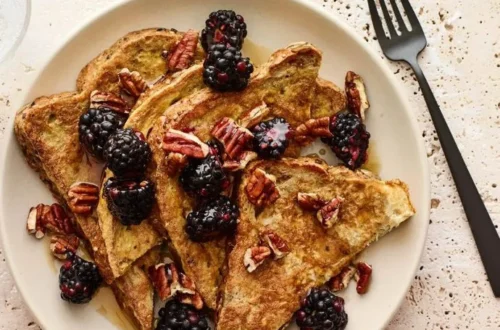How I Manage My Sugar Cravings Without Derailing My Diet
Sugar cravings were my biggest enemy for a long time. I might be really diligent all day, sticking to my healthy eating plan, working out, and feeling terrific. Then, without fail, the evening would come, and I would have a strong, almost primitive need for anything sweet. I felt like a pint of ice cream or a sleeve of cookies was holding all my hard work prisoner. I thought I just didn’t have enough willpower.
After this fight with sugar cravings, I felt stuck in a cycle of guilt and restriction. I would battle it, fight it, fight it, and finally give up, feeling like I had failed. Things began to change when I stopped trying to fight my cravings with physical force and started trying to understand them instead. I learned that these sensations weren’t an indication of moral weakness; they were a normal response.
I learnt how to deal with my sugar cravings without feeling like I was missing out or damaging my diet by changing the way I think and making a list of simple ways to do things. This is the personal, helpful counsel I wish I had back then—no rigid rules, just helpful tips that genuinely work.

Why Do We Get Sugar Cravings?
The first step to controlling your desire is to figure out why you have it. You don’t just think it. Dopamine is a hormone that makes you feel happy and gives you rewards when you eat sugar. This experience makes your brain feel good and desire to do it again, which creates a strong feedback loop.
Several factors can amplify these Sugar cravings:
- Habit: Do you always eat a cookie after dinner? Your brain learns this pattern and begins to expect it.
- Blood Sugar Imbalance: Eating a lot of refined carbs or sugar might make your blood sugar go up quickly and then drop quickly. When you crash, you usually want more sugar to bring your levels back up.
- Stress & Emotions: Your body makes cortisol when you’re angry or upset. You might want to eat more and opt for “comfort foods,” which are usually sweet.
I felt like I could find real answers when I recognized that I was dealing with biology and habit instead of a character issue.

My Strategies for Managing Sugar Cravings
This isn’t about getting rid of sugar for good. It’s about finding the right balance so you can enjoy life, stay in command, and feel good. These are the plans that worked best for me.
1. I Upgraded My Meals to Prevent Cravings
I learned that the greatest approach to stop an afternoon appetite is to stop it from happening in the morning. I began cooking meals with a lot of fiber, healthy fats, and protein.
- Protein: It fills you up and makes you joyful. I ensured that every meal, especially breakfast, contained a high amount of protein. I ate eggs, Greek yogurt, or chicken, for example.
- Healthy Fat: Avocados, almonds, and olive oil are some healthy fats that slow down digestion and help maintain constant blood sugar levels.
- Fiber: Fruits, vegetables, and whole grains all have fiber in them. It also keeps you full and stops your energy from decreasing quickly.
BI stopped the blood sugar rollercoaster that was making me want to eat in the first place by eating in this manner. I was no longer running on empty by 3 p.m.

2. I Found Healthier Swaps for My Favorite Treats
When you don’t eat anything at all, you often end up bingeing later. Instead, I found healthier options that satisfied my sweet taste without giving me too much sugar. This plan changed everything for me because I didn’t feel like I was missing out.
- When I want ice cream, I eat a bowl of plain Greek yogurt with some berries and a little bit of honey. It’s sweet, creamy, and full of protein.
- When I want chocolate, I eat one or two squares of high-quality dark chocolate with at least 70% cacao. It’s really enjoyable to eat a tiny bit because it has a lot of flavor and antioxidants.
- If I want candy, I eat fruit instead. A bowl of luscious cherries, a juicy peach, or a handful of grapes has natural sweetness and fiber.
3. I Learned to “Surf the Urge”
A hunger can be only a thought that comes and goes. I learnt how to “surf the urge,” which is a way to eat mindfully. I’d recognize the craving without judging it, instead of giving in right away. I’d say to myself, “Okay, I want chocolate right now.” After that, I would set a timer for 15 minutes and do something else, like clean a room, listen to a podcast, or take a brief stroll. Most of the time, the craving had gone away by the time the timer went off.

4. I Stayed Hydrated
This sounds too simple to work, but it’s surprisingly effective. Mild dehydration is often misinterpreted by the body as hunger or a sugar craving. Before reaching for a snack, I make it a rule to drink a full glass of water and wait a few minutes. Many times, that’s all my body really needed. Adding a slice of lemon or a few mint leaves to my water also helps break the monotony and feels like a small treat.

5. I Prioritized Sleep
This was a major deal. When I was tired, I couldn’t stop wanting sugar. When you don’t get enough sleep, your hunger hormones become messed up. Ghrelin (the “I’m hungry” hormone) goes up, and leptin (the “I’m full” hormone) goes down. Getting 7 to 8 hours of good sleep every night helped me control my appetite and cut down on my cravings for quick-energy sugar fixes.

Don’t Let Cravings Control You
Getting over your sugar cravings is a journey, not a goal. It’s fine to crave the real dessert on some days still. The goal is not to be perfect, but to improve. You are the one who needs to make your relationship with food better.
I learned about my own behaviors, found reasonable substitutions, and focused on fueling my body to break the cycle of hunger and shame. I feel more in control, more energetic, and more sure that I can live a healthy life that I like.
Ready to get a handle on your own sugar cravings? Try picking just one of these strategies to focus on this week. You might be surprised at the difference it makes! What’s your go-to trick for managing a sweet tooth? Share it in the comments below!






